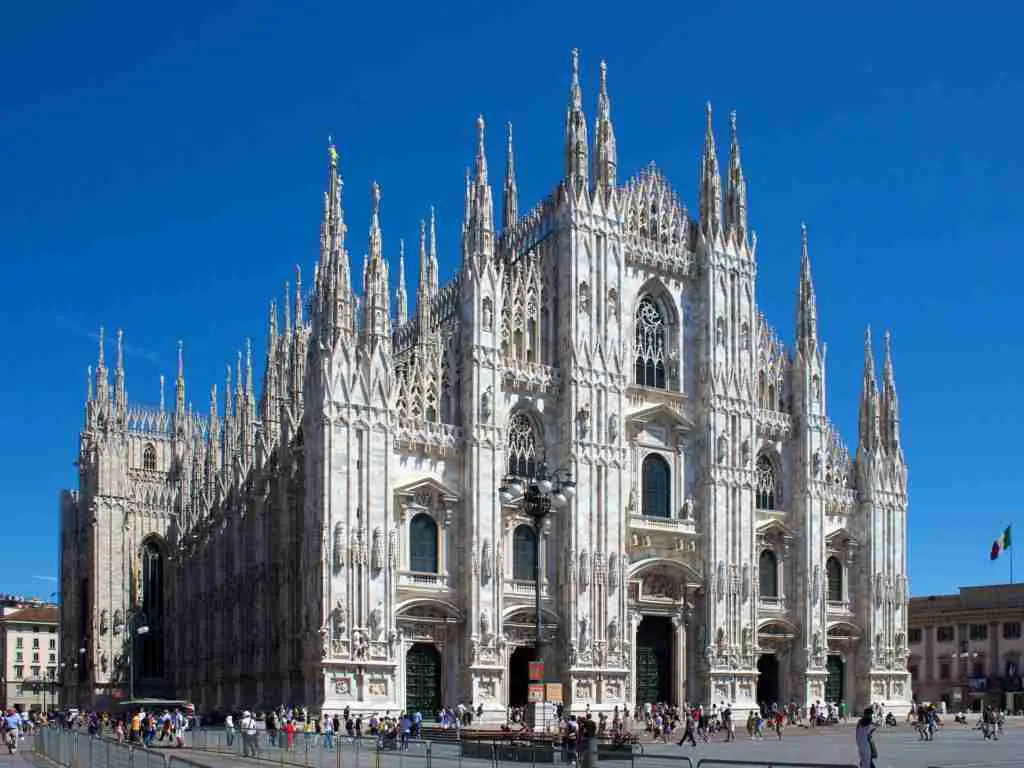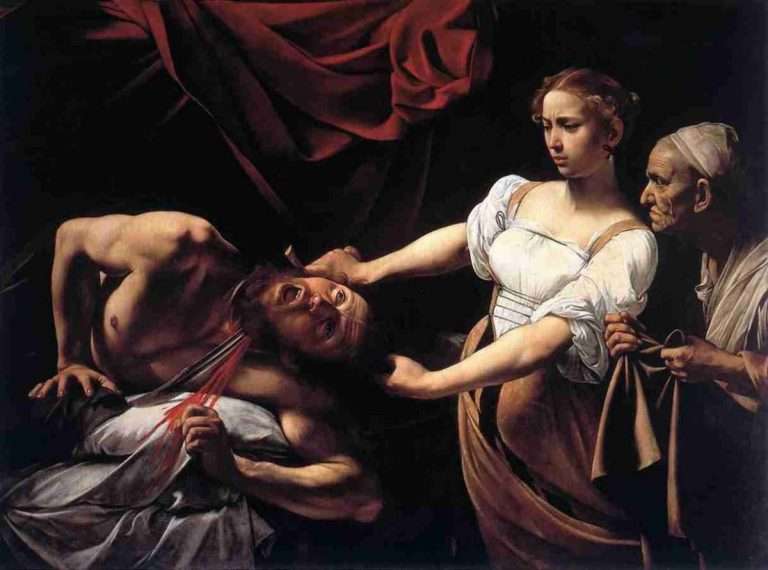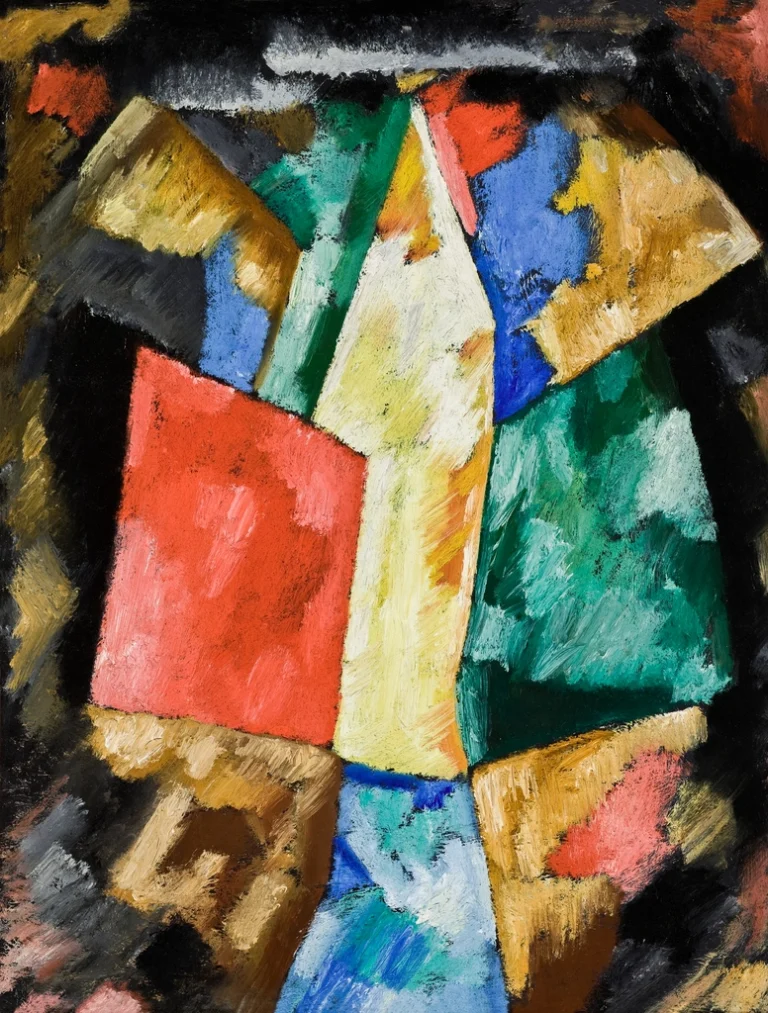
Milan’s famed Duomo, also known as Santa Maria Nascente (Saint Mary of the Nativity), is that jagged, Gothic behemoth that defines the city’s traditional skyline.
Constructed of grey-veined, pink-hued Candoglia marble, Milan’s cathedral is the second largest church on the Italian peninsula, second only to St. Peter’s Basilica. If you’re being technical about it, the Duomo is the largest church in Italy since St. Peter’s is in Vatican City. But most guides will simply say that the Duomo is the second largest church in Italy.
It took more than 500 years to complete the construction of the Duomo. More than 78 architects and engineers worked on the project from its groundbreaking in 1386 to its completion in 1965.
The best part about visiting the Milano Duomo is, in my opinion, being able to go up to the roof. Here, you can get close to some of the cathedral’s 135 spires and get a glimpse of the restoration work being done on the church’s trademark pink and white Candoglia marble.
The roof of the Milan Duomo also affords visitors a spectacular view of Milan’s cityscape, which is a jumble of old towers and new skyscrapers (notably the Unicredit building). On a clear day, you can even see the Alps.
Top Tours of the Milano Duomo
- Milan Duomo Rooftop with a Private Guide. Let an expert guide you through the Duomo’s history and architecture. This 2-hour visit includes time on the rooftop and in the church.
- Fast Track Milan Cathedral Tour. This 1.5-hour visit to the Duomo and its rooftop also includes access to San Gottardo and the Duomo Museum plus a discount at the bookshop.

Tips For Visiting the Duomo in Milan
When to Go
- Get there early…or late…but mostly early. Tourist entry begins at 8 a.m. each day. The church stays open until 8 p.m. But if you want to visit the terraces (the roof), the last admission is at 7 p.m.
- Go on a weekday if you can. We were there over the weekend, which was typical of most tourists according to one of our taxi drivers. “Most people think they can do Milan in a weekend, so they all come on Saturday and leave on Sunday. Weekdays are much more tranquil.”
What to Wear
- Follow the dress code for churches. That mostly means no short shorts or short skirts and no tank tops.
- Wear rubber-soled shoes or shoes with some sort of tread if you plan to visit the roof. I was fine in my flat-bottomed leather boots, but the tiles on the roof can be slippery.
How to Save Money
- Save money by taking the stairs instead of the elevator to the roof. The climb is challenging, sure. But this isn’t the Empire State Building.
- The Duomo Pass (the cumulative ticket that gives entry to the church, the terraces, the archeological area, and the Duomo museum) is free for disabled travelers and their companions and for children 6 years and younger.
Outside the Milano Duomo: Views from the Roof
Milan’s Duomo has 135 spires and you can get a closer look at them plus the facade’s buttresses and flying buttresses by taking a tour of the roof. On a clear day, you can see the cityscape of Milan and beyond towards the countryside of Lombardy.
The roof is safe to walk on but it’s not completely flat. But I recommend you wear rubber-soled shoes if you plan to visit the roof because some areas can be slippery or at an incline.








Outside the Milano Duomo: A Few Details
From the roof, but also from the street, you can observe loads of details on the exterior of Milan’s cathedral. There are relief sculptures, such as the one of the Tower of Babel (below), and decorative, allegorical bronze doors. The five doors depict the Edict of Constantine; the life of Saint Ambrose, Milan’s patron saint whose tomb is across town; the life of Mary (detail below); the Battle of Legnano; and the history of the cathedral.
Numerous statues “guard” the facade of the Duomo, including saints, sibyls, and prophets. Atop the cathedral’s main spire is a gold statue of Mary which locals call the Madonnina.


Inside the Milano Duomo: A Vast Interior
At first glance, the interior of the Duomo looks austere and lacking the colorful frescoes and sculptures of other churches in Italy. But there are some artworks, tombs, and objects of note.
Near the altar is the most famous work of art in the church. The statue of Saint Batholomew, his flayed skin thrown over his shoulder, was completed by Marco d’Agrate in 1562.
The first stones for the polychrome marble floor were laid in 1584 but weren’t completed until the early 20th century.





Post first published on October 6, 2015


![Gabbiano Azzurro Hotel & Suites: Sardinian Style in Golfo Aranci [Review]](https://www.italofile.com/wp-content/uploads/Pool-Terrace-Gabbiano-Azzurro-Sardegna-scaled-768x512.jpg)



